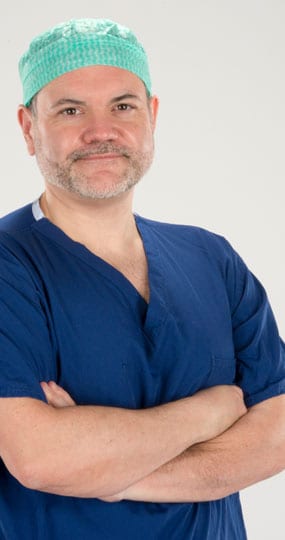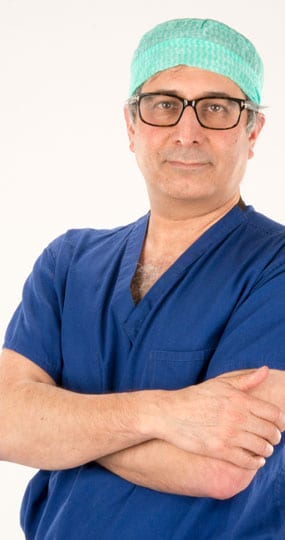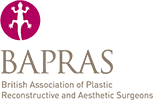Procedure — body
Scar Removal
Scar removal works to dramatically reduce the appearance of an unwanted scar anywhere on the face or body. This type of procedure can also be referred to as scar revision and, depending on the type of scarring that is to be addressed, will require one of a range of surgical techniques.
When the skin is damaged by way of an accidental or purposeful cut (such as during surgery), a scar is often left behind. Collagen forms at the site of the wound in order for the skin to knit itself back together. Scar tissue is different in tone and texture from normal skin tissue, developing in slightly different forms, depending on the way in which the skin is torn. Types of scarring includes: pitted scars, keloid scars, hypertrophic scars or scar contractures.

Scar removal works to dramatically reduce the appearance of an unwanted scar anywhere on the face or body. This type of procedure can also be referred to as scar revision and, depending on the type of scarring that is to be addressed, will require one of a range of surgical techniques.
When the skin is damaged by way of an accidental or purposeful cut (such as during surgery), a scar is often left behind. Collagen forms at the site of the wound in order for the skin to knit itself back together. Scar tissue is different in tone and texture from normal skin tissue, developing in slightly different forms, depending on the way in which the skin is torn. Types of scarring includes: pitted scars, keloid scars, hypertrophic scars or scar contractures.
At a Glance
Duration
Treatment dependent
Type Of Anaesthetic
Treatment dependent
Return To Work (job dependent)
Treatment dependent
Day Case / Overnight
Day case
Bra / Garment To Be Worn For
Treatment dependent
Return To Gym
As advised
In-depth Procedure Information
The Consultation
Although scars will often fade with time, it is very unlikely they will completely disappear. This can lead to the affected person feeling self-conscious with their appearance if the scar is large in size and is in a place that is particularly noticeable to others.
At your consultation your surgeon will assess the type of scarring you have. This will enable the right kind of procedure to be recommended and a suitable treatment plan to be put in place. Whichever type of procedure is recommended for you, it is important to be realistic about the results that can be achieved. As well as explaining how the procedure will be carried out, including any potential complications or risks, your surgeon will make sure you understand what the area will look like afterwards. The outcome of the procedure may not completely erase the look of your scarring, but it should go a long way to significantly reducing its appearance. Talking with previous patients about their scar removal procedure can help to ease your concerns.
The Procedure
The removal or reduction of a scar can be done through a range of techniques, including: silicone gel or sheets – often used to flatten a raised scar, the sheets are worn over the scar as advised for a recommended amount of time to soften and even out the tissues;
Steroid injections – a series of injections are applied to keloid or hypertrophic scars to reduce a raised or thickened scar;
Laser therapy – pulses of light targeted at a red scar can help to even its tone. This method can also increase collagen production which helps to reduce the look of pitted, or sunken, scars.
Cryotherapy – by freezing a keloid scar, the tissues can flatten and stop growing, as well as creating a more even tone. This type of procedure is more effective on scarring that is still in its early stages;
Dermal fillers – pitted scars can benefit from being filled by an injectable gel, creating an even surface to the skin;
Microneedling – the tone and texture of the skin’s surface is greatly improved by the responses of healing and repair that is produced when microinjections are applied to the skin using a dermaroller;
Surgery – cutting into the scar can often release the tension of a tight scar, especially if it restricts movement or is located at a joint. This can encourage the regrowth of healthier tissues that are softer and more even in tone;
Pressure dressings or skin grafts – used on scar contractures (often caused by burns), these procedures are used on larger areas and can either soften the area of scarring, or replace the surface of the skin altogether.
Aftercare & Results
The treatment area may become discoloured and experience swelling and discomfort for around the first 1 or 2 weeks of the recovery period. The full duration of healing could take several weeks, allowing for the new scar to fully form and fade. Different treatments can have variations with the after effects that are to be expected, all of which will be explained during the initial consultation.
By undergoing a scar revision procedure, new healthier tissues have the chance to grow which can help to improve the tone and texture of the wound. The colouring of the skin can be more in-line with the natural colouring that surrounds the scar and the texture can be softer and more flush to the skin’s surface. By creating a mark on the skin that is less obvious than it was before, it can be less noticeable to others if it is in a visible location. This in turn can help a person to feel more confident and happier with their appearance.
FAQ's
To have a scar can cause a person to feel like their appearance is flawed. An irregularity on the skin is often unwanted by the affected person, especially if the scar is located somewhere visible, including: on the face, arms or legs.
Your concerns will be assessed by your surgeon at a consultation, where the proposed procedure will be explained, depending on the type of scarring you have.
At Reshape & Restore a scar removal procedure will be selected according to the treatment option that best suits your concerns. The surgeons at Reshape & Restore are leading consultant plastic surgeons who highly regard your welfare, ensuring your best interests are always at the heart of your treatment. With a wealth of surgical experience, you can be sure that Reshape & Restore will deliver the best results possible, using up-to-date techniques which take your safety into consideration at all stages of treatment.
The results of a scar removal procedure can be long-lasting. Before the final outcome develops it is normal for the treatment area to experience swelling, tenderness and discolouration. This will fade within 1 – 2 weeks when softer, more even tissue will grow. For tight, contracted scars, the skin may feel less taut with more freedom to move. In some cases a series of procedures may be required to reach the desired goal. It is important to point out that although a scar may not disappear completely, it should dramatically reduce visibility.
The consultation session will help to prepare you for the type of procedure you are about to undergo, ensuring you understand how it is carried out and the outcome you can expect. Any medical evaluations will take place before the procedure. Healing from a surgery is always more successful when smoking is stopped and certain medications (aspirin or anti-inflammatory drugs) have also been stopped.


Prices From
£850
Plastic surgery procedures are not off the peg but tailor made, bespoke procedures that vary from person to person. The above prices act as a guide in the standard or average case. The actual cost of surgery may be less or more and will be confirmed after your consultation.
Enquire Today








